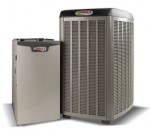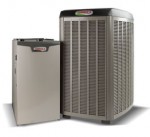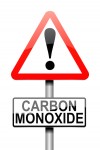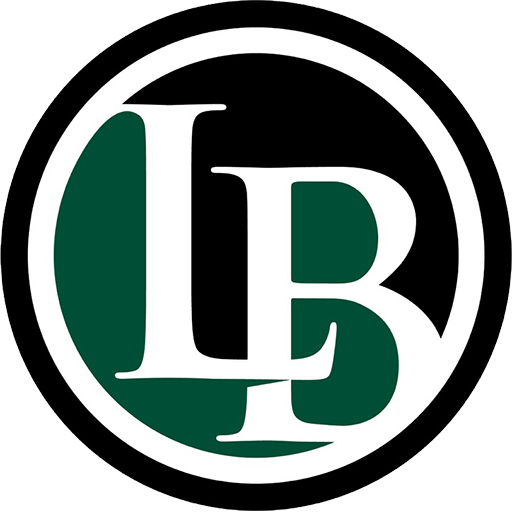15 Money Saving Tips to Reduce Your Energy Bill This Winter
 The average U.S. household pays an average annual cost of $992 a year in natural gas bills. That’s a lot of money. So how do we keep that heat inside our homes instead of losing it to leaks and inefficiency? The team at Lancaster put together these 15 tips to help you save energy this winter. See which ones will be easiest to incorporate into your lifestyle:
The average U.S. household pays an average annual cost of $992 a year in natural gas bills. That’s a lot of money. So how do we keep that heat inside our homes instead of losing it to leaks and inefficiency? The team at Lancaster put together these 15 tips to help you save energy this winter. See which ones will be easiest to incorporate into your lifestyle:
- Bundle Up – Don’t change the thermostat if you’re feeling chilly, change your wardrobe. If you feel chilly at home, put on a sweater or jacket and cover your feet with socks or slippers.
- Use Your Programmable Thermostat Wisely – Many homes have programmable thermostats, but are they being used to their maximum efficiency? The Department of Energy says lowering your thermostat at least 3-4 degrees for eight hours a day can save you 5 percent to 10 percent off your heating bill. It’s easy to program the thermostat to drop at night when everyone is tucked snugly into bed. If you don’t have a programmable thermostat, you can do this manually, but it’s a lot harder to remember to do every day.
- Make Sure Registers Are Clear – Don’t let furniture, rugs or drapery block your registers. That’s like having your registers partially open. This wastes heat and makes your furnace work harder.
- Don’t Run Exhaust Fans Any Longer Than Necessary – If you run kitchen or bathroom fans, make sure to turn them off as soon as possible. Not only do they remove steam and odors, they take heat with it.
- Lock Doors and Windows – Even when doors and windows are closed, they might not be pressed tight against the weatherstripping. Lock them to make sure the seal is tight and warm air cannot escape.
- Make Sure Windows and Doors Are Sealed – Add caulk or weather stripping to doors or windows to seal small cracks where heat can escape. Adjust door thresholds if you can see any daylight under your doors. Most thresholds have screws that can be adjusted. Turn the screws counterclockwise to bring the threshold up. If the door drags on the threshold, lower it just a bit.
- Don’t Waste Heat That You Created – We’re talking about heat from the oven or even the shower. Don’t keep these trapped inside the appliance or the room. Open the doors and let that extra heat (and moisture) infiltrate the rest of the house.
- Check Furnace Filters – Regular maintenance will help your furnace run more efficiently. Remember to check the filters in your heating system and make sure they’re clean and clear. Dirty filters lead to higher heating costs.
- Let Sunlight in during the Daytime – Let any sunlight in during the day as solar gain will add heat as well as light. Your furnace won’t have to work as hard.
- Cover Windows after Dark – Reduce heat lost by keeping cold air outside. Curtains and blinds act as another layer between your home and the cold temperatures outside.
- Don’t Forget about Outlets – Electrical outlets in your wall allow air to escape around them. Fill small gaps around the electrical boxes with caulk. For large gaps, use expandable foam sealant. You can also place a foam gasket over the outlet or switch before you replace the cover. It may seem like a small gesture, but those outlets and switches will be there forever.
- Seal around Pipes, Gas, and Electrical Lines – These areas in your exterior walls usually have gaps that let cold air in. Use expanding foam to close the holes. An added bonus is that not only will it keep the cold air out, it will keep mice and bugs out too.
- Seal and Insulate the Attic Door – This is one place most homeowners don’t even think about, but warm air will escape easily through an attic door that is not insulated. Make sure your door forms a good seal when it is closed and add weather stripping if it doesn’t. Also, attach fiberglass insulation to the back of the door. This is a place that is typically skipped when attic insulation is installed.
- Seal Your Ductwork – Your ducts carry heated air through a long system of metal tubes. Don’t let that air escape into unheated areas like the basement. A typical home can lose 20 – 30% of the air in the system due to holes, leaks, and poor connections. Check your ductwork and seal it with metal tape. (Believe it or not, duct tape is not the best tape for this job.)
- Consider a Furnace Tune-Up – A tune-up is a great idea. Not only will it protect your family from carbon monoxide leaks, but it will ensure your furnace is running at peak efficiency saving you money on heating bills.
Lennox Makes a Wide Variety of Energy Saving Home Comfort Systems
 We are proud to install Lennox brand furnaces and air conditioners, and when you install a programmable thermostat, you are sure to gain the most efficiency you can from your new heating and cooling system. Lennox makes a wide variety of programmable thermostats. If you need help choosing one, or want more information on current rebates and offers, give us a call and our comfort specialists can give you all the details.
We are proud to install Lennox brand furnaces and air conditioners, and when you install a programmable thermostat, you are sure to gain the most efficiency you can from your new heating and cooling system. Lennox makes a wide variety of programmable thermostats. If you need help choosing one, or want more information on current rebates and offers, give us a call and our comfort specialists can give you all the details.
We hope some of these tips help you save the maximum amount on your winter energy bills. If you would like to schedule a furnace tune-up, just give us a call at (913) 851-3399 or contact us online. Look for money-saving service coupons on our website.
Chris Lancaster January 10th, 2018
Posted In: Heating
Tags: energy savings, heating facts, tips
How to Set Your Programmable Thermostat for the Biggest Savings
 Utility bills are the biggest expense most households incur. According to the latest statistics (Dec. 2017) from Expatistan, an international cost of living website, the average price of utilities for one month (heating, electricity, gas…) for 2 people in 900 sq. ft. home in Kansas City, Missouri is $230. Multiply that by 12 and it’s approximately $2,760 per year. The larger the home, the larger the utility bills. Reducing your utility bill is one of the best ways to put a significant amount of money back into your pocket. The good news is, it’s easy to do with a programmable thermostat.
Utility bills are the biggest expense most households incur. According to the latest statistics (Dec. 2017) from Expatistan, an international cost of living website, the average price of utilities for one month (heating, electricity, gas…) for 2 people in 900 sq. ft. home in Kansas City, Missouri is $230. Multiply that by 12 and it’s approximately $2,760 per year. The larger the home, the larger the utility bills. Reducing your utility bill is one of the best ways to put a significant amount of money back into your pocket. The good news is, it’s easy to do with a programmable thermostat.
The team at Lancaster Brothers Heating and Cooling has put together this simple tutorial on how to save as much as 10% a year on heating and cooling by simply using your programmable thermostat. The Department of Energy reports that turning your thermostat back 7°-10°F for 8 hours a day from its normal setting will save you up to 10%. If you live in a 900 sq. ft. home, this means you save about $276! Read on to learn the secrets to saving big.
How Do I Program My Thermostat to Save Money?
Since you don’t need to heat or cool your home as much while you are away at work or sleeping, those are the times to lower or raise the temperature to reduce the amount of energy you use. The good news is, you won’t even notice! Here are some simple guidelines for year-round programming:
Winter Settings – for the winter months, we suggest setting the thermostat to 72 degrees Fahrenheit while you’re awake, and set it seven to ten degrees lower while away or asleep.
Summer Settings – for the summer months, set the thermostat for 72 degrees Fahrenheit when you are at home and warmer than normal while you are away. We suggest that you set your thermostat up no more than five degrees at any point in time. With the open floor plans of modern homes today, the volume of space your air conditioner is trying to condition makes it counterproductive because it’s too hard for your system to catch up on really hot days.
Tips for Choosing a Programmable Thermostat
If you don’t yet own a programmable thermostat, you’ll find there are a lot of choices out there. Here are some tips for purchasing a programmable thermostat. Some of the features to consider include:
- User-friendly digital displays so you can easily preset the temperatures for different parts of the day.
- Wi-Fi compatibility. Homeowners are able to adjust the settings using a computer, tablet, or smartphone.
- Alerts for changing the filter in your HVAC unit.
- Allow manual overriding of a setting without losing preset programming.
- Programs that differentiate between weekdays and weekends.
If you need help installing a new programmable thermostat, just give Lancaster Brothers a call.
Lennox Makes a Wide Variety of Programmable Thermostats
 We are proud to install Lennox brand furnaces and air conditioners, and when you install a programmable thermostat, you are sure to gain the most efficiency you can from your new heating and cooling system. Lennox makes a wide variety of programmable thermostats. If you need help choosing one, give us a call and our comfort specialists can give you all the details.
We are proud to install Lennox brand furnaces and air conditioners, and when you install a programmable thermostat, you are sure to gain the most efficiency you can from your new heating and cooling system. Lennox makes a wide variety of programmable thermostats. If you need help choosing one, give us a call and our comfort specialists can give you all the details.
If you’re ready to make the switch to a programmable thermostat and keep a few hundred more dollars in your pocket each year, contact us and let our dedicated and knowledgeable technicians install one for you today! Or call us at (913) 270-0698.
Chris Lancaster December 12th, 2017
Posted In: Cooling, Geothermal, Heating, Indoor Air Quality
Tags: heating facts, thermostats
5 Furnace Smells and What They Mean
 Sometimes appliances in our home can make funny smells and we wonder if it’s just temporary or something we should be concerned about. At Lancaster Brothers, we’re familiar with these smells and we know which ones to ignore and which ones mean “sound the alarm”. Here’s a little breakdown so you’ll know too.
Sometimes appliances in our home can make funny smells and we wonder if it’s just temporary or something we should be concerned about. At Lancaster Brothers, we’re familiar with these smells and we know which ones to ignore and which ones mean “sound the alarm”. Here’s a little breakdown so you’ll know too.
What’s That Smell Coming from my Furnace?
1. Burnt toast – this smell is common at the beginning of furnace season. It’s nothing to be alarmed about. Basically, dust gathers on the furnace parts over the summer and when the furnace turns on and those parts heat up, a slight burning smell fills the house. Once the dust has burned away, the smell should be gone. If the smell persists after the first or second time you turn your furnace on, it may be something more. Give us a call.
2. Mustiness – if you smell a musty odor, it may be due to moisture buildup in your duct system. We can recommend a reputable duct cleaning company to make sure your ducts are dry and odor free. After you get the ducts cleaned, change your air filter to a fresh, clean filter.
3. Metallic or electrical burning – this could be an object in the duct work that starts to smell when it gets overheated. Sometimes a spill on a register or in the duct work can also cause this type of smell. So check that first especially if you have small spill-prone children (show me one that’s not). If you don’t find anything obvious, It could also be the furnace motor overheating or a cracked heat exchanger. Call a technician to get to the source of the smell.
4. Burning plastic or rubber – if components or electrical elements inside your furnace are getting too hot, they may produce furnace smells similar to burning oil, hot plastic, or rubber. If you smell odors that suggest something in your furnace is overheating or burning, shut the furnace off immediately and call a technician.
5. Rotten eggs – this smell is the most serious of all. It indicates a gas leak. Utility companies and fuel providers put a sulfur smell in the normally odorless natural gas so it is detectable by human beings. Do not mess around if you smell sulfur. Shut off your furnace and call a utility company.
If you smell #3, 4, or 5, it could indicate a problem with your furnace or worse, give us a call at at (913) 851-3399 and one of our technicians will come take a look. We’re here to help.
 If you have an older furnace (and you know who you are) start it up early so you’re not living without heat on a cold day. If you think this is the year you’ll need a new furnace, give us a call and we’ll fill you in on the great deals going on with Lennox. A new high-efficiency furnace will heat your home better and save you money on energy bills. Lancaster Brothers proudly installs Lennox furnace and air conditioning systems. Contact us for current rebates and special financing for qualified homeowners.
If you have an older furnace (and you know who you are) start it up early so you’re not living without heat on a cold day. If you think this is the year you’ll need a new furnace, give us a call and we’ll fill you in on the great deals going on with Lennox. A new high-efficiency furnace will heat your home better and save you money on energy bills. Lancaster Brothers proudly installs Lennox furnace and air conditioning systems. Contact us for current rebates and special financing for qualified homeowners.
Chris Lancaster November 13th, 2017
Posted In: Heating
Tags: furnace, Furnace Maintenance
Turn Your Furnace on before It’s Cold to Catch Problems Early
 The last thing you want when the cold weather arrives is to turn your furnace on and discover it is broken. Unfortunately, the team at Lancaster Brothers sees this scenario play out every year. Everyone turns their furnaces on about the same time and we get swamped with repair calls. We try to get to all of them as soon as possible, but the situation is never ideal. So be one of the smart homeowners who turns their furnace on early this year, stay warm, and avoid any hassle.
The last thing you want when the cold weather arrives is to turn your furnace on and discover it is broken. Unfortunately, the team at Lancaster Brothers sees this scenario play out every year. Everyone turns their furnaces on about the same time and we get swamped with repair calls. We try to get to all of them as soon as possible, but the situation is never ideal. So be one of the smart homeowners who turns their furnace on early this year, stay warm, and avoid any hassle.
Furnace Troubleshooting Tips
Sometimes, the problem may be easy to fix and you may not need a service call at all. Here’s a list of some of the most common furnace issues we see and a few troubleshooting tips to try this season that just might save you some money.
Furnace Won’t Turn On
- Check circuit breakers. A fuel-run furnace has some components that require electricity.
- Check the air filter. A dirty filter can block airflow, shutting down the furnace.
- Double check that the thermostat is set to Heat or Auto.
- Make sure the gas valve is turned on.
Special note: If your furnace contains a pilot light, your furnace may be outdated and in need of a replacement.
Related Read: Save Money with a Programmable Thermostat
Furnace Blows Cold Air
- Change air filter.
- Check that the thermostat is set to Heat or Auto. The “on” position keeps the fan blowing continually. However, if the furnace is not fired up, it’s simply recycling room temperature air.
- Make sure the gas supply is turned on.
- Check that the condensate drain line is not clogged. Clogs activate a switch that will prevent the furnace from lighting.
Furnace Makes Strange Noises
- Rattle: It could be loose panels, a misaligned blower, or a motor malfunction. The latter two require the skill of a technician.
- Clicking: Repeated clicking could be your control panel, the compressor, or a defective electrical relay. Again, you may need to call a technician to fix this.
- Grinding: Motor bearings may need replacement or a belt may require alignment – all jobs for a trained furnace technician.
- Squealing: The belt connecting the motor to the fan may have slipped or needs to be replaced.
Important safety warning: If you have a natural gas furnace, you need a carbon monoxide detector in your home, no matter the age of your furnace.
Related Read: Carbon Monoxide Safety – What Families Need To Know
 If you have an older furnace (and you know who you are) start it up early so you’re not living without heat on a cold day. If you think this is the year you’ll need a new furnace, give us a call and we’ll fill you in on the great deals going on with Lennox. A new high-efficiency furnace will heat your home better and save you money on energy bills. Lancaster Brothers proudly installs Lennox furnace and air conditioning systems. Contact us for current rebates and special financing for qualified homeowners.
If you have an older furnace (and you know who you are) start it up early so you’re not living without heat on a cold day. If you think this is the year you’ll need a new furnace, give us a call and we’ll fill you in on the great deals going on with Lennox. A new high-efficiency furnace will heat your home better and save you money on energy bills. Lancaster Brothers proudly installs Lennox furnace and air conditioning systems. Contact us for current rebates and special financing for qualified homeowners.
If you try these troubleshooting tips and you still don’t have any heat, you need professional help. Give us a call at at (913) 851-3399 or contact us online. Expert help will arrive fast!
Chris Lancaster October 12th, 2017
Posted In: Heating, Maintenance
Tags: Furnace Maintenance, heating facts
You Don’t Need Two Air Conditioners for a Two-Story Home – You Need Zoning
 House too hot upstairs in the summer? Downstairs too cold in winter? If you struggle with making your whole house comfortable at the same time, there’s a solution and it doesn’t involve purchasing another furnace or air conditioner. It’s called zoning and the team at Lancaster Brothers is here to tell you how it works. Zoning can help you save on your heating and cooling bills and make your home more comfortable and it can be added to your existing heating and cooling system.
House too hot upstairs in the summer? Downstairs too cold in winter? If you struggle with making your whole house comfortable at the same time, there’s a solution and it doesn’t involve purchasing another furnace or air conditioner. It’s called zoning and the team at Lancaster Brothers is here to tell you how it works. Zoning can help you save on your heating and cooling bills and make your home more comfortable and it can be added to your existing heating and cooling system.
What Is Zoning?
Most homes rely on one unit to heat or cool the home. A zoned home breaks your home into different segments based on your heating and cooling needs. Instead of trying to control the temperature throughout the entire house, zoning allows you to control temperatures in individual areas. Zoning can be added to your existing heating and cooling equipment. A zone control panel communicates with your thermostat, dampers and your furnace and AC. The thermostats in each zone send a signal to the control panel to send air to that area. Dampers placed in your ductwork are wired to a specific zone on the control panel, which is controlled by a specific thermostat. They automatically open and close depending on what the thermostats tell them they need.
Related Reads: Is your furnace acting up? Make sure you know the signs of trouble here!
What Kind of Homes Benefit from Zoning?
If you have a home with more than two stories, a home with a finished basement, areas with large windows or high ceilings, or unused rooms that you close off in the winter or summer because they aren’t comfortable, you are an ideal candidate for zoning. Older homes can benefit from zoning as well because many older houses are unable to be equipped with traditional heating and cooling ductwork. Empty nesters can also benefit because empty rooms don’t need to be heated and cooled every day.
Zoning Gives You Flexibility
 Sometimes examples help make the benefits of zoning more clear. Let’s look at a few. With zoning you would be able to have the master bedroom set at a colder temp than the kids rooms if you like it colder when you sleep. Or let’s say you’re having a party and lots of people would be gathering in the kitchen and family room. You would be able to direct additional cooling to the kitchen/family room to balance the heat from extra bodies, heat from cooking, and heat from soaring outdoor temperatures. With a zoned system you can control the temperature when and where you need it.
Sometimes examples help make the benefits of zoning more clear. Let’s look at a few. With zoning you would be able to have the master bedroom set at a colder temp than the kids rooms if you like it colder when you sleep. Or let’s say you’re having a party and lots of people would be gathering in the kitchen and family room. You would be able to direct additional cooling to the kitchen/family room to balance the heat from extra bodies, heat from cooking, and heat from soaring outdoor temperatures. With a zoned system you can control the temperature when and where you need it.
Air Conditioner Zoning Saves You Money
Zoning saves you money on heating and cooling bills because you only heat/cool the zones you’re using, instead of the entire house. It gives you more control over which zones are heated or cooled, saving you money on the zones you don’t need to be heated or cooled all day, every day.
 Lennox iHarmony Zoning System
Lennox iHarmony Zoning System
At Lancaster, we install quality Lennox products including the Lennox iHarmony zoning system. The iHarmony system makes heating and cooling your home simple and convenient. It allows you to control up to four zones and each zone has its own independent thermostat. Adjustments to zone temperatures can be made at each thermostat, and you have the option of adjusting every zone at your main thermostat as well.
 If you’d like to learn more, call us at (913) 851-3399 or contact us online and one of our professional technicians can answer your questions and customize a zoning plan specifically for your home.
If you’d like to learn more, call us at (913) 851-3399 or contact us online and one of our professional technicians can answer your questions and customize a zoning plan specifically for your home.
Chris Lancaster September 5th, 2017
Posted In: Cooling, Heating, Indoor Air Quality
Tags: AC Maintenance, Lennox
How to Beat Kansas City Humidity
 Humidity goes hand in hand with living in Kansas City. And even though your air conditioner occasionally runs nonstop in the summer, it just can’t keep all of that moisture out of your home.
Humidity goes hand in hand with living in Kansas City. And even though your air conditioner occasionally runs nonstop in the summer, it just can’t keep all of that moisture out of your home.
Older ACs Can’t Keep Up with High Humidity
When humidity is high, your heating and cooling unit has to work extra hard to control the moisture level in your home. Sometimes older heating and cooling units, or units that may have been incorrectly sized from the beginning, can’t keep up with the level of moisture in the air. Replace your system with a dual stage air conditioning unit and furnace with a variable speed fan motor. This works wonders for humidity removal.
What Is a Dual Stage Air Conditioner?
The main difference between a single and a dual stage air conditioner is the compressor unit. A single-stage air conditioner’s compressor only has one level of cooling – full blast. A two-stage air conditioner’s compressor works on two different levels – high for hot summer days (basically the same as full blast for single stage ACs) and low for milder days when you don’t need as much cooling.
Advantages of Dual Stage ACs
The two main advantages of dual stage air conditioners are better energy efficiency and greater comfort. Below we explain both in more detail:
Greater Energy Efficiency
A dual stage AC means lower utility bills because the unit isn’t running at full blast all of the time. On cooler days, it will run at the lower setting, but will automatically kick up to the higher level when needed. A single-stage air conditioner turns on and off more often because it can only cool at one speed, then turn off once it reaches your thermostat setting. Every time your AC starts up, it takes a lot of energy, which raises your utility bill. But the two-stage air conditioner can meet your cooling needs about 80% of the time with its low setting, meaning it will run more often without as many starts and stops.
Greater Comfort
Because the two-stage air conditioner runs more continually, it will provide more even cooling. Your temperature won’t fluctuate up and down with the ons and offs of a single stage system.
But an even bigger advantage to the dual stage system is moisture removal. A dual stage system can remove twice as much moisture/humidity from your air. And in Kansas City, that’s important to comfort as well.
Dehumidifiers Remove Excess Moisture
Besides dual stage air conditioners, another option for removing moisture from your home is installing a dehumidifier. With proper installation, a dehumidifier can work in conjunction with your heating and cooling system to remove excess moisture, and help prevent unwanted bacterial growth. We recommend the Lennox whole-home dehumidification system.
Tips for Keeping Humidity Out of Your Home
Here are some other ways to keep additional moisture and humidity from building up in your home:
- Make sure clothes dryers are vented to the outside
- Use vent fans in kitchen when cooking
- Use vent fans in bathrooms when showering
- Seal doors and windows
- Seal cracks or holes in ducts
- Run a dehumidifier
- Keep air conditioning drip pans and drain lines clean and unobstructed
- Cover dirt floors in crawl spaces with a plastic vapor barrier
Let Lancaster Help with Repairs or Replacement
 Having issues with an older AC? Let us look and either repair or replace the unit so you and your family stay cool and comfortable. Lancaster Brothers is proud to install Lennox air conditioners, so if your air conditioner is on its last leg, we will be happy to provide a free estimate. There are also rebates and financing available for qualifying systems, and our comfort specialist will let you know about available programs.
Having issues with an older AC? Let us look and either repair or replace the unit so you and your family stay cool and comfortable. Lancaster Brothers is proud to install Lennox air conditioners, so if your air conditioner is on its last leg, we will be happy to provide a free estimate. There are also rebates and financing available for qualifying systems, and our comfort specialist will let you know about available programs.
If you have moisture problems or musty smells in your home, give the team at Lancaster a call at (913) 851-3399 and we’ll give you cleaner, fresher, air to breathe in your home.
Chris Lancaster August 8th, 2017
Save Money While You Sleep with a Programmable Thermostat

If you don’t yet have a programmable thermostat, you may find yourself wanting one after reading this article. Using a programmable thermostat can save you up to 10% annually on your utility bills! Think of the money you spend every year and imagine being able to stash 10% of that back in your pocket.
A programmable thermostat automatically adjusts the heating or air conditioning according to a preset schedule that you have chosen. Read on to learn the secrets to saving big.
How Do I Program My Thermostat to Save Money?
Since you don’t need to heat or cool your home as much while you are away at work or sleeping, using a programmable thermostat can reduce the amount of energy you use, which can literally save you money while you sleep!
Winter Settings – for the winter months, we suggest setting the thermostat to 72 degrees Fahrenheit while you’re awake, and set it lower while away or asleep.
Summer Settings – set the thermostat for 72 degrees Fahrenheit when you are at home and warmer than normal while you are away.
You can save up to 10% a year by simply turning the thermostat back five to seven degrees for eight hours a day from its normal setting.
How Much Can I Save?
Crunch the numbers yourself with the savings calculator. If you would like to learn of potential energy savings for your home specifically, consider using an energy savings calculator.
After filling out the required fields, the calculator will provide you with estimated energy costs and savings. See what you can expect to save by using a programmable thermostat.
Thermostat Features to Look For
There is a wide array of programmable thermostats on the market. Some of the most common features to consider include:
- User-friendly digital displays so you can easily preset the temperatures for different parts of the day.
- Wi-Fi compatibility. Homeowners are able to adjust the settings using a computer, tablet, or smartphone.
- Alerts for changing the filter in your HVAC unit.
- Allow manual overriding of a setting without losing preset programming.
- Programs that differentiate between weekdays and weekends.
Changing your thermostat is easy. You can change it any time. But an ideal time to change it is when you install a new heating and cooling system.
Lancaster Brothers is proud to install Lennox brand furnaces and air conditioners, and when you install a programmable thermostat you are sure to gain the most efficiency you can from your new heating and cooling system. Lennox typically has rebates and financing options, so our comfort specialists can give you all the details.
5 Tips to Stay Cool at Night in Warmer Temps
If you have a programmable thermostat and would like to set the temperature up a few degrees while you sleep, here are some tips for sleeping cooler that will allow you to save money while you sleep and still stay cool.
1. Use Fans the Right Way
Start off by utilizing your ceiling fan. Make sure its settings are switched so the blades run counter-clockwise, which pulls hot air up and out. This can help keep the lower portion of your room cooler
2. Opt For Loose PJ’s
Opt for loose fitting PJs to doze off in. Try a lightweight tank or oversized t-shirt, and airy shorts. Loose fitting clothing allows your body to breathe at night. It also won’t restrict your movements.
3. Choose Cotton Bedding
Forget fancy satin or silk sheets, and just steer clear of sheets made of synthetic fabric. Instead, opt for 100% cotton sheets. They are lighter weight, and allow your body to breathe all night long.
4. Say ‘No’ to Your Oven at Night
At all costs, avoid using your oven or stovetop before you turn in for the night. Ovens and stoves create a lot of heat that gets trapped in your home long after you’re done cooking. Try to substitute your microwave or outside grill instead.
5. Skip Washing or Drying Until the Morning
Other activities to avoid doing at night include running your dish or clothes washers and dryers. These also create heat that can warm up your home at night. Instead, run these in the morning before you leave for work.
If you’re ready to make the switch to a programmable thermostat and save money while you sleep, contact us and let our dedicated and knowledgeable technicians install one for you today! Or call us at (913) 270-0698.
Chris Lancaster May 12th, 2017
Tags: thermostats
The Basics of Furnace Troubleshooting
 As temperatures drop, the last thing you want is trouble with your furnace. And it always seems like trouble starts at the most inopportune times, right before you go to bed or on a Sunday afternoon when most businesses are closed.
As temperatures drop, the last thing you want is trouble with your furnace. And it always seems like trouble starts at the most inopportune times, right before you go to bed or on a Sunday afternoon when most businesses are closed.
Luckily, the problem may be simple and you may not need a service call after all. Here’s a list of some of the most common furnace issues and a few troubleshooting tips to try this season.
Furnace Won’t Turn On
- Check circuit breakers. A fuel-run furnace has some components that require electricity.
- Check the pilot light of fuel-run furnaces. If you hear a click as the furnace attempts to initiate, it could be that the pilot light is out.
- Check the air filter. A dirty filter can block airflow, shutting down the furnace.
- Double check that the thermostat is set to Heat or Auto.
- Make sure the gas valve is turned on.
Related Read: Save Money with a Programmable Thermostat
Furnace Blows Cold Air
- Change air filter.
- Check pilot light.
- Check that thermostat is set to Heat or Auto. The “on” position keeps the fan blowing continually. However, if the furnace is not fired up, it’s simply recycling room temperature air.
- Make sure the gas supply is turned on.
- Check that the condensate drain line is not clogged. Clogs activate a switch that will prevent the furnace from lighting.
Furnace Makes Strange Noises
- Rattle: It could be loose panels, a misaligned blower, or a motor malfunction. The latter two require the skill of a technician.
- Clicking: Repeated clicking could be your control panel, the compressor, or a defective electrical relay. Again, you may need to call a technician to fix this.
- Grinding: Motor bearings may need replacement or a belt may require alignment – all jobs for a trained furnace technician.
- Squealing: The belt connecting the motor to the fan may have slipped or needs to be replaced.
Related Read: Top 5 Reasons You’ll Love Our Maintenance Plan
 And at some point, your furnace just may be old and ready to be replaced. A newer furnace and air conditioning system can eliminate the guesswork and provide peace of mind for you and your family. Plus, they can help pay for themselves with higher efficiency, which means they will cost less to operate.
And at some point, your furnace just may be old and ready to be replaced. A newer furnace and air conditioning system can eliminate the guesswork and provide peace of mind for you and your family. Plus, they can help pay for themselves with higher efficiency, which means they will cost less to operate.
 Lancaster Brothers proudly installs Lennox furnace and air conditioning systems. Contact us for current rebates and special financing for qualified homeowners.
Lancaster Brothers proudly installs Lennox furnace and air conditioning systems. Contact us for current rebates and special financing for qualified homeowners.
But first, If you try these fixes and it turns out that you need professional help, give us a call at Lancaster Brothers. Contact us at (913) 851-3399. Expert help will arrive fast!
Chris Lancaster December 29th, 2016
Posted In: Heating
Carbon Monoxide Safety – What Families Need To Know
 If your home is heated by a gas furnace, for your family’s safety, it is important that you know the basics about carbon monoxide safety. Carbon monoxide (CO) is a silent, odorless killer. Here are some sobering facts:
If your home is heated by a gas furnace, for your family’s safety, it is important that you know the basics about carbon monoxide safety. Carbon monoxide (CO) is a silent, odorless killer. Here are some sobering facts:
Deaths: The Centers for Disease Control (CDC) report, on average, 430 deaths annually by accidental CO poisoning.
Hospitalization: National Institutes of Health (NIH) report, on average, 2,000 hospitalizations annually due to accidental CO poisoning.
Carbon Monoxide Poisoning Symptoms to Look For
Because exposure to carbon monoxide gas produces symptoms that mimic the flu, it’s important to know the difference. Here are typical symptoms of CO poisoning:
- Blurred vision
- Confusion
- Dizziness
- Dull headache
- Loss of consciousness
- Nausea or vomiting
- Weakness
CO Safety Practices Every Home Should Follow
Get Annual Furnace Tune-Ups
Every homeowner with a gas powered furnace should have an annual tune-up. During an annual tune-up, skilled technicians will inspect the entire furnace. Pilot light system and gas pressure are evaluated and adjusted if necessary. Mechanical equipment is also inspected. Some working parts may require adjustment or lubrication. To ensure your family’s safety, it’s important to get a tune-up and a clean bill of health for your furnace every year.
Install a Carbon Monoxide Detector
A carbon monoxide detector will emit a loud sound to warn you when carbon monoxide gas in the air. They are easy to purchase at any home improvement store for about $25-$50. They simply plug into an outlet and monitor your home’s air, much like a smoke alarm. If your home has gas powered appliances (like furnaces), this is a necessary piece of home safety equipment.
A smoke detector IS NOT a CO detector, although combination detectors are sold. CO detectors should be installed on every living level within a home, in the basement and near an attached garage (but not inside the garage). Select detectors with battery back-up if it features a hard-wired power source. Also, be sure to install fresh batteries in existing CO detectors every year.
Related Read: 3 Reasons to Call Lancaster before the Other Guys
To schedule your annual furnace tune-up, or to have CO detectors installed, call Lancaster Brothers. Please contact us online or call us at (913) 851-3399 and we’ll be happy to help!
Chris Lancaster December 15th, 2016
Posted In: Heating
Get in the Zone: The Advantages of Zoning Your Home
 Everyone says, “Get out of your comfort zone”. Well, at Lancaster Brothers Heating and Cooling, we say, “Get into your comfort zone!” We’re talking about heating and air conditioning, of course. The goal of any homeowner is to keep your home comfortable year round. The trick is to do it without spending a fortune on heating and cooling bills.
Everyone says, “Get out of your comfort zone”. Well, at Lancaster Brothers Heating and Cooling, we say, “Get into your comfort zone!” We’re talking about heating and air conditioning, of course. The goal of any homeowner is to keep your home comfortable year round. The trick is to do it without spending a fortune on heating and cooling bills.
With winter quickly approaching, it’s time to start thinking about the inevitable increase in heating costs. Keeping your home warm can be a challenge, but zoning can help you save on your heating/cooling bills and make your home more comfortable.
What Is Zoning?
Most homes rely on one unit to heat or cool the home. A zoned home breaks your home into different segments based on your heating and cooling needs. Instead of trying to control the temperature throughout the entire house, zoning allows you to control temperatures in individual areas. Zoning can be added to your existing heating and cooling equipment. A zone control panel communicates with your thermostat, dampers and your furnace and AC. The thermostats in each zone send a signal to the control panel to send air to that area. Dampers placed in your ductwork are wired to a specific zone on the control panel, which is controlled by a specific thermostat. They automatically open and close depending on what the thermostats tell them they need.
Related Read: What Your 5 Senses Can Tell You about Your Furnace
Who Benefits from Zoning?
There are several factors that make zoning beneficial to the home. Homes with more than two stories, homes with finished basements, areas with large windows or high ceilings, and rooms that you close off in the winter or summer because they aren’t comfortable. Older homes can benefit from zoning as well because many older houses are unable to be equipped with traditional HVAC ductwork.
How Does Zoning Increase Comfort?
Zoning increases comfort in your home by allowing each zone to be set at an optimal temperature for its inhabitants. Families tend to have different hot and cold thresholds, and zoning eliminates fighting over the thermostat.
How Does Zoning Save Money?
Zoning saves money on heating and cooling bills because you only heat/cool the zones you’re using, instead of the entire house. It gives you more control of which zones are heated or cooled, saving you money on the zones you don’t need to be heated or cooled all day, every day.
If you would like to save money on heating/cooling costs and make your home more comfortable, contact us. At Lancaster Brothers will be happy to answer any of your questions and help in any way we can. Call us at (913) 851-3399.
Chris Lancaster November 9th, 2016
